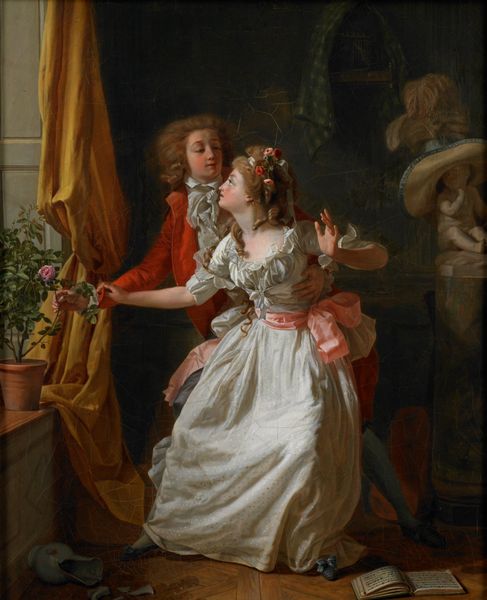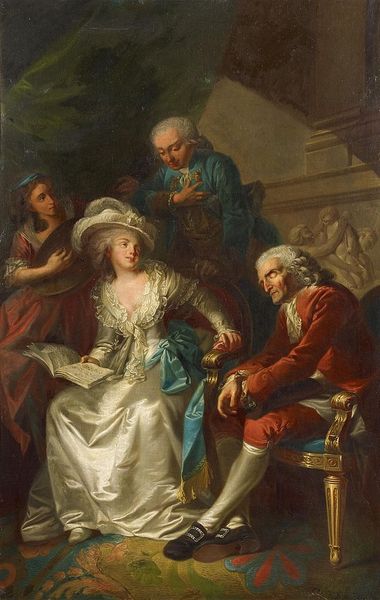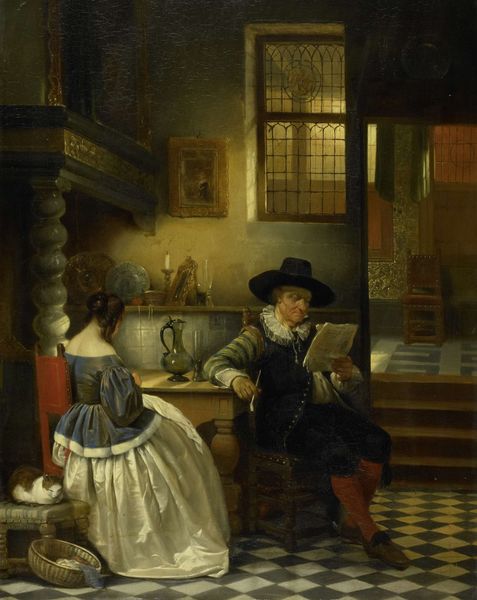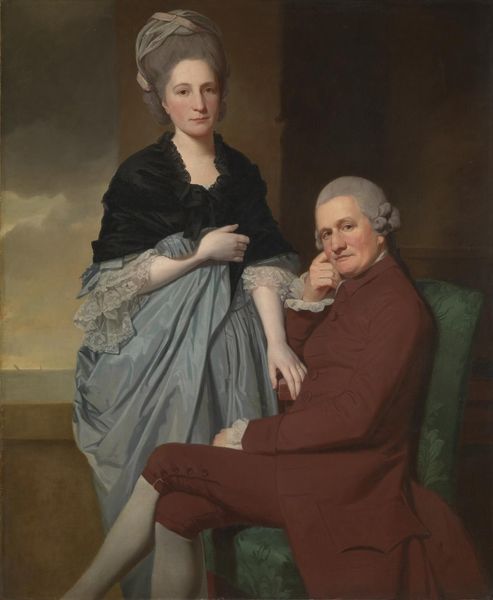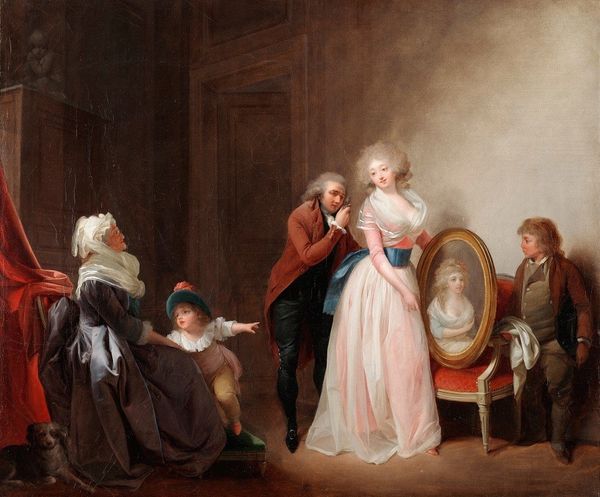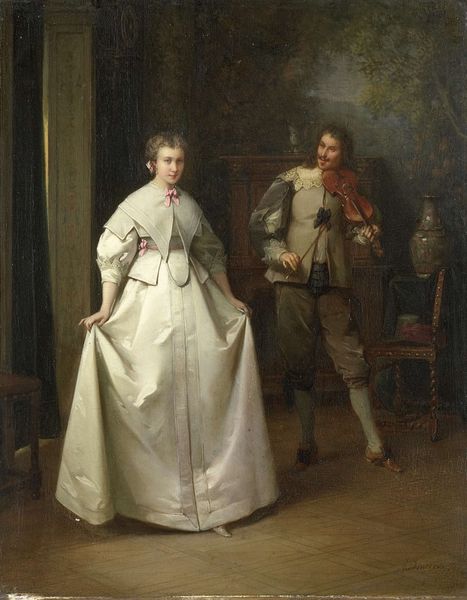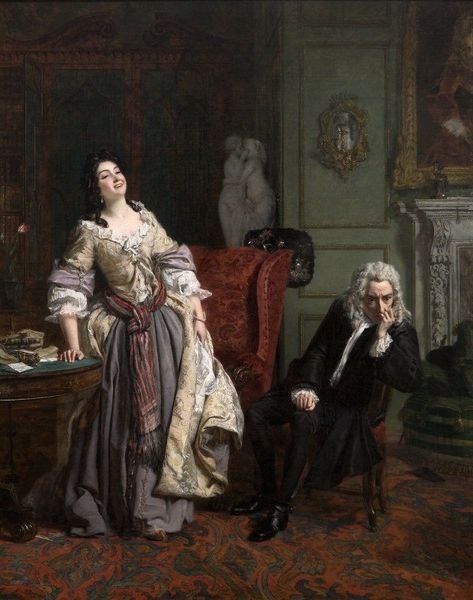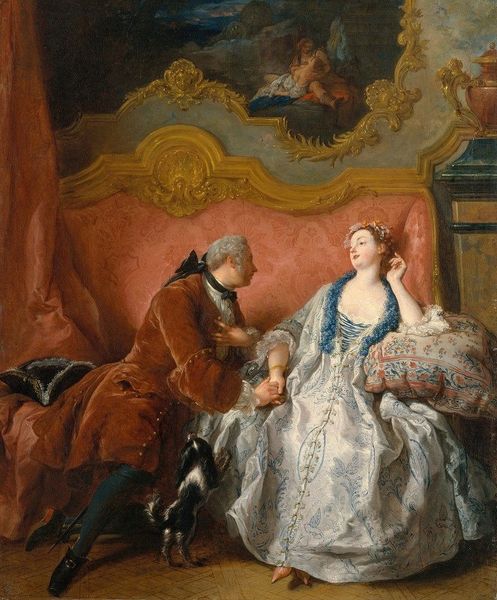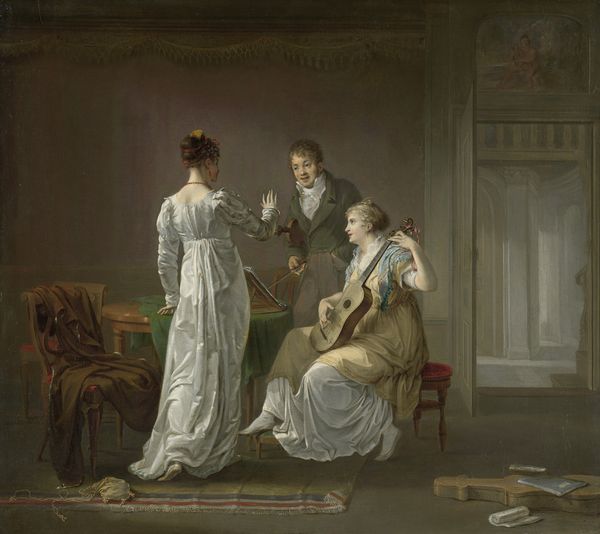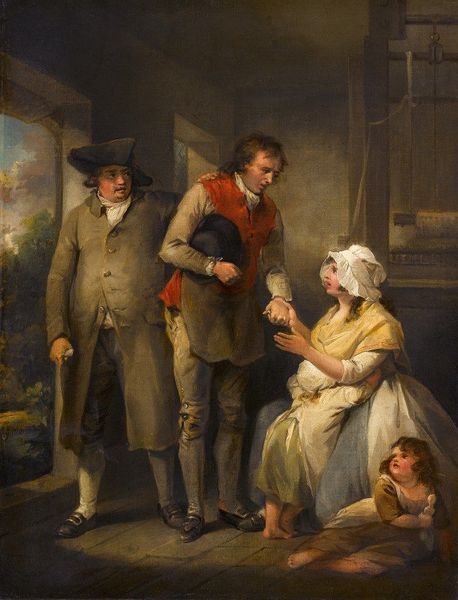
painting, oil-paint
#
portrait
#
figurative
#
painting
#
oil-paint
#
group-portraits
#
romanticism
#
genre-painting
#
academic-art
Copyright: Public Domain: Artvee
Curator: Jens Juel’s "The Artist and his Wife Rosine, née Dørschel," created in 1791, presents us with a fascinating double portrait in oil. Editor: It strikes me as quite domestic, and in a way, surprisingly intimate. Despite the formality of the clothing, there’s a comfortable closeness in their arrangement. It's almost unsettling. Curator: The composition reinforces that intimacy, wouldn’t you agree? The artist and his wife are centrally located in the picture frame. Juel guides our eye with the receding orthogonal lines in the architecture that mimic and mirror the shapes found within the canvas’ pictorial frame. This, compounded with a muted color palette, creates the feeling that the work is both receding away from us and, yet, always visible, like the enduring marriage the work memorializes. Editor: Yes, but is that "closeness" idealized or genuinely representative? What social expectations shaped the portrayal of marital roles here? Look at Rosine's demure posture, juxtaposed with Jens Juel’s confident gaze and painter's tools. How do we interpret the fact that Jens is in the midst of working in the very same image? Is Rosine a muse or subject to a patriarchal dynamic where her identity becomes entangled with her husband's artistic creation? Curator: Formally, I see a deliberate use of light and shadow to sculpt the figures. Juel’s precise handling of oil-paint renders such detailed textures on Rosine's gown and hair ribbon that create depth and substance. The subdued background only serves to heighten the subjects as a part of the larger picture. Editor: It begs a question: how were women meant to perform for, or negotiate power in relationship with, a male artist, husband, authority figure, at the time? I am not totally sure. Are there any objects placed within the scene that could operate symbolically to speak to broader concepts of identity formation and its challenges during the age of revolutions? What is that miniature hanging over their heads, anyway? It’s impossible to make out! Curator: Perhaps the picture hanging behind them speaks to an ongoing conversation. The couple seems unified, at least compositionally. Ultimately, the artist employs the classical aesthetic with subdued and restrained, cool tonalities and clear structure, to present a double portrait for an elite, upper-class audience. Editor: Ultimately, Jens Juel gives us an interesting commentary on the place of artists, their subjects, and how both negotiate marriage and identity through painting at the cusp of radical change. I, for one, want to ask more questions!
Comments
No comments
Be the first to comment and join the conversation on the ultimate creative platform.
